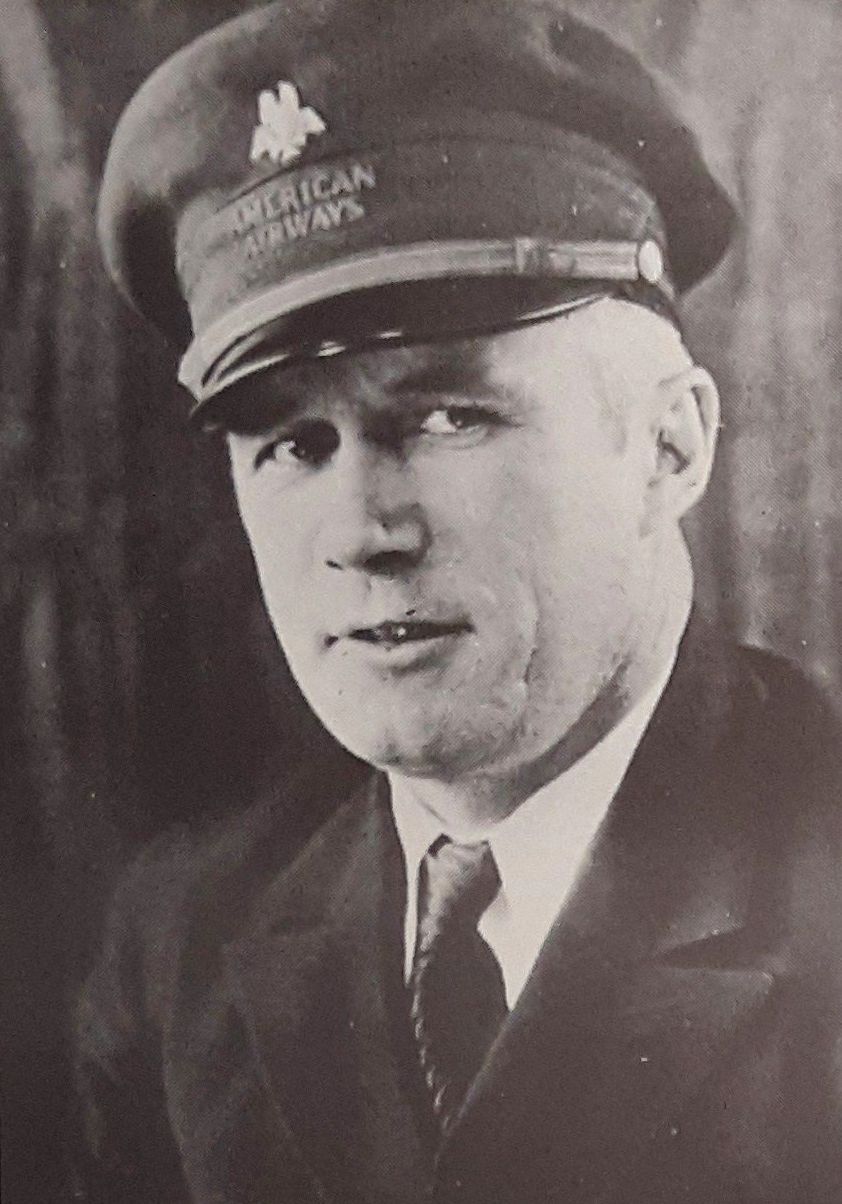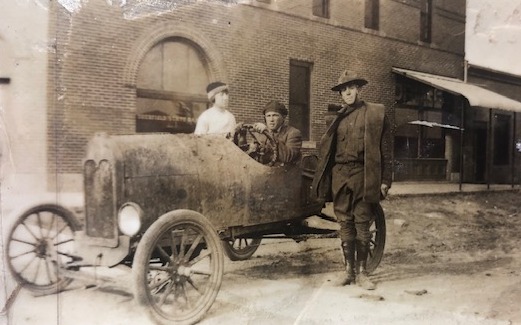When Ira “Big Mac” McConaughey died in 1936, news of the famed flier’s death was carried in major newspapers across the country from New York City to San Francisco. Born at Deerfield to James C. and Emma McConaughey, Ira had made a habit of making headlines.

Ira was in the automobile repair business at Deerfield with Bill Bechtel prior to entering the Navy in 1918. McConaughey served aboard the U.S.S. Cacique, a freighter leased by the United States Navy to transport Allied personnel and cargo to France in support of the European fighting front during World War I. After his honorable discharge in 1919, he returned to Kearny County and once again engaged in the garage business with Bechtel. Their Santa Fe Garage opened in 1920, and in addition to repairing vehicles, the proprietors also sold automobiles, gas, parts, and tires. The business was located on the east side of Deerfield’s Main Street and later became the sight of Santa Fe Motors.
Even before he was a pilot, Ira made the local news for his prowess behind the wheel. In June of 1920, the Advocate reported that he was a speed king, “eating breakfast in Kansas City, dinner in Wichita and supper in Deerfield. What is the need of an airplane, when a Ford makes these things possible?”
But Ira soon caught flying fever. The Angel Flying Circus was the main attraction each day of the 1923 Kearny County Fair, and less than a month later, Ira and Fred Fulton purchased their own plane from Jimmy Angel who taught them how to pilot it. Before long, Ira was performing with the flying circus at fairs and air shows. His name was consistently in the local papers from that time on.
In March of 1924, Ira was piloting when a crippled Angel plane crashed into a willow tree break near Dermott, Arkansas. Ira and passenger “Sailor Jack” Lewis were only injured, but star acrobat Mildred Bennett was killed instantly. Bennett, 18-year-old Hardtner, Kansas native, was the first woman to transfer from one plane to another while in mid-air, a feat she first accomplished at Kearny County’s 1923 fair.
In May of 1924, the Advocate reported that, “Ira McConaughey was here Tuesday visiting his parents and his arrival was out of the ordinary way, having arrived in his air plane, the first bird man ever to visit relatives and friends in Lakin, by this kind of conveyance.”
By July 1924, Ira was at Texarkana, Texas, and in charge of the flying field there. That October, the Advocate carried the news that he had flown from Texarkana to Dayton, OH, in nine hours, “a most remarkable record” for that time.
Before long, McConaughey was making the national papers. In 1928, he won the free-for-all event at the Newton, Kansas air races with an experimental plane developed by Walter H. Beech of Travel Air Manufacturing (later Beechcraft). In 1929, Ira flew the mystery ship to a world’s speed record of 235 miles per hour for land planes. When Big Mac performed at the Kansas City air races in 1929, the Kansas City Star said he “has traveled faster than any man who ever percolated through the upper reaches of the stockyards.” According to the Fort Worth Star-Telegram, Ira’s speed record was not broken until about a month before his death.
McConaughey also worked for Swallow Company, Riesser Company, Travel Air and Universal Airlines, and he was chief pilot and operations manager at Central Airlines where he flew a regular run between Wichita and Tulsa. In 1931, he moved to Dallas and became a pilot for American Airlines.
In September of 1932 when three army airplanes failed to locate a crashed airplane in the Guadalupe Mountains, it was Ira who located the wreckage. McConaughey was dispatched from Dallas to hunt the plane and sighted it; then, he landed at the emergency field and returned to the downed plane in a borrowed automobile. Again, Ira’s name made national news.
Ira died in a Dallas hospital on September 26, 1936, after a brief illness. He was 41 years old and left behind his wife of five years, Mary Francis; his mother, two brothers and two sisters. Ira “Big Mac” McConaughey had logged more than 12,000 hours in the air, or approximately 1,500,000 flying miles.


SOURCES: History of Kearny County Vol. II; archives of The Advocate, Wichita Evening Eagle, Wichita Eagle, Sylvia Sun, Kansas City Post, Tulsa Daily World, Atlanta Journal, Washington D.C. Evening Star, New York Daily News, San Francisco Examiner, Fort Worth Star-Telegram, and Dallas Morning Star; Ancestry.Com; Wikipedia; and Museum archives.
